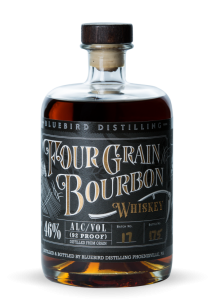

Suntory Shirofuda (White Label) was launched in 1929 and relied on Taketsuru’s whisky knowledge from studying in Scotland. Masataka Taketsuru and Shinjiro Torii, the founders of Nikka and Suntory, respectfully, collaborated to create a whisky for the Japanese market. The industry as we know it started in the early 20th century and can be credited to two men. However, it took several decades of experimentation to win over the hearts of global consumers. Japanese whisky is an internationally renowned category, with even one bottle clinching Whisky Bible’s renowned title of Best Whisky in the World. “A lot of how whiskey comes about in different regions actually comes from the avoidance of the government, typically to avoid taxation or getting caught,” Jeltema says. This type of whiskey came about after a 1785 tax on malted barley led distillers to create an entirely new category. The definition of single pot still allows up to 30 percent malted barley. When you delve into the specific types of whiskey from Ireland, you can also find single malts and what they call single pot still. But, like its Scottish neighbor, Irish whiskey must be aged for a minimum of three years.

“But is a little bit looser with the definition.” While Scotch legally requires the combination of malted barley, water, and yeast, Irish whiskey can use corn and other grains. “They’re neighbors with a long history of distillation,” says Jeltema. But Ireland's whiskey (with an e, because of its Irish Gaelic roots) has its own unique qualities. Ireland's proximity to Scotland explains many of the similarities between their whisky traditions. “They are very popular Scotches that a lot of people drink because they’re usually really easy to sip," she says. Johnnie Walker Black Label, for example, sources the whiskies for its blend from over 36 different distilleries. With single malt distilleries like Glenmorangie and Lagavulin, you’re able to pick up the unique flavors they’ve spent centuries crafting.īlended Scotch, on the other hand, can combine several malts from a variety of distilleries, which can balance out the individual flavors and make a recipe all its own. “ Single malts are designed to highlight one particular distillery," says Jeltema. There are two primary categories of Scotch: single malts and blends. In the cool Scottish climate, the spirits can sit in casks for decades and rack up a hefty price per bottle. Scotch, by legal definition, is a whisky made with 100 percent malted barley, water, and yeast that’s aged for a minimum of three years in oak. Over the years, the Scotch industry has overcome obstacles associated with high taxes and rampant smuggling to establish itself as one of the predominant whisky markets in the world. Play icon The triangle icon that indicates to play The word "whisky" itself derives from the shortened Gaelic version of that phrase, "uisge," which was commonly spoken in the Scottish highlands. The oldest written record of whisky distillation can be traced back to Scotland in 1494, where a friar bought malted barley to make "aqua vitae" (Latin for "water of life"). But what distinguishes bourbon from other types of American whiskey? What's the difference between "whisky" and "whiskey"? We consulted Sarah Jeltema, whiskey educator, Certified Specialist of Spirits, and the brain behind Whisky Nomad, to give us the scoop on the whiskey types you need to know.

These days, you can find rows and rows of different brands and styles at your local liquor store. Starting from humble beginnings in European monasteries, the tradition of making distilled alcohol using fermented grain mash has grown and traveled to nearly every corner of the world. Whiskey is one of the oldest types of alcohol on the market today.


 0 kommentar(er)
0 kommentar(er)
